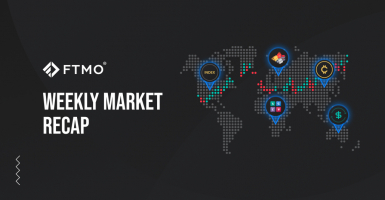Weekly market recap

31 March 2025
US stocks have had one of their worst quarters, gold continues to break all-time records and the US dollar is ...

24 March 2025
Gold surged past $3,000 per ounce last week, marking a historic milestone as geopolitical tensions and demand for safe-haven assets ...

17 March 2025
Positive data from the US labour market helped the US dollar to rise to two-year highs, but the stock markets ...

10 March 2025
Positive data from the US labour market helped the US dollar to rise to two-year highs, but the stock markets ...

03 March 2025
Positive data from the US labour market helped the US dollar to rise to two-year highs, but the stock markets ...

24 February 2025
Positive data from the US labour market helped the US dollar to rise to two-year highs, but the stock markets ...
